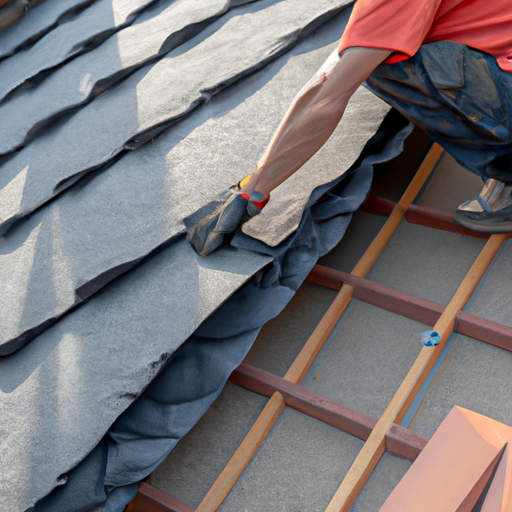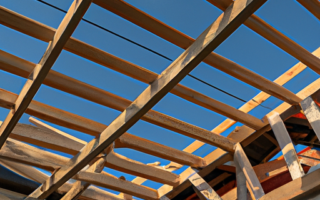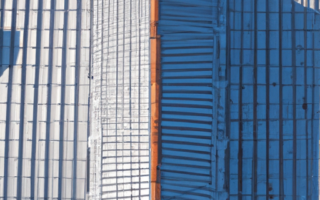The Importance of Proper Roof Design: Key Considerations for Successful Construction
The Importance of Proper Roof Design: Key Considerations for Successful Construction
When it comes to roof construction, proper design is crucial for ensuring the longevity, durability, and overall performance of the structure. A well-designed roof not only protects the building from external elements such as rain, wind, and snow but also enhances its energy efficiency and aesthetic appeal. In this article, we will explore the key considerations and best practices for achieving a successful roof design.
One of the primary factors to consider when designing a roof is the climate and weather conditions of the area. Different regions experience varying levels of precipitation, temperature extremes, and wind speeds. A roof designed for a tropical climate, for example, will differ significantly from one designed for a cold, snowy region. By analyzing the local weather patterns, architects and engineers can determine the appropriate materials, slope angles, and insulation requirements for the roof.
Another important consideration is the intended use of the building. Is it a residential property, a commercial facility, or an industrial warehouse? Each type of building has unique requirements that need to be addressed in the roof design. For instance, residential roofs often feature additional elements such as skylights, dormers, and chimneys, while commercial roofs may need to accommodate HVAC systems, solar panels, or rooftop gardens.
Structural integrity is another critical aspect of roof design. The roof must be capable of supporting its weight, along with any additional loads such as snow accumulation or equipment installations. The right choice of materials, as well as proper calculations for truss systems or load-bearing walls, ensures that the roof can withstand these forces without compromising its stability.
Besides functionality, aesthetics also play a significant role in roof design. The roof is one of the most visible parts of a building and can greatly impact its overall appearance. Architects often leverage different materials, colors, and textures to create visually appealing roof designs that complement the architectural style of the building. At the same time, they must ensure that the chosen materials are durable and can withstand long-term exposure to the elements.
Lastly, energy efficiency is an increasingly important consideration in roof design. A well-insulated roof can significantly reduce heating and cooling costs, improve comfort levels inside the building, and minimize its carbon footprint. The use of reflective coatings, proper ventilation, and insulation materials with high R-values all contribute to enhancing the energy performance of a roof.
In conclusion, proper roof design is crucial for successful construction. Considering factors such as climate, building usage, structural integrity, aesthetics, and energy efficiency all contribute to creating a roof that not only provides reliable protection but also enhances the overall quality and value of the building. By prioritizing these key considerations and following best practices, architects and engineers can ensure the long-term success of their roof construction projects.
Essential Roofing Materials and Techniques for Long-Lasting Structures
When it comes to constructing a long-lasting and reliable roof, the choice of roofing materials and techniques is crucial. Using the right materials and employing the best practices can ensure the durability and longevity of the structure. In this article, we will delve into the essential roofing materials and techniques that are key to successful roof construction.
One of the most important aspects of roof construction is selecting the appropriate roofing materials. There are various options available, each with its own benefits and considerations. Asphalt shingles are a popular choice due to their affordability and versatility. They come in different colors and styles, making them suitable for a wide range of architectural designs. Additionally, asphalt shingles are durable and can withstand different weather conditions.
Metal roofing is another excellent option for long-lasting structures. Metal roofs have a longer lifespan compared to other materials, as they can last for up to 50 years or more with proper maintenance. They are highly resistant to fire, rot, and insect damage, making them a durable choice. Metal roofs also offer great energy efficiency, reflecting heat and reducing cooling costs.
For a more eco-friendly solution, consider using green roofing materials such as living roofs or solar shingles. Living roofs, also known as green roofs, involve growing vegetation on the top of the building. They provide natural insulation, improve air quality, and reduce stormwater runoff. Solar shingles, on the other hand, utilize solar panels that resemble traditional shingles. They harness solar energy, reducing dependency on traditional power sources and lowering energy bills.
In addition to the choice of materials, proper installation techniques are essential for the success of roof construction. Attention to detail and adherence to industry best practices can significantly impact the longevity of the roof. It is crucial to ensure that the roof is properly aligned to prevent water leakage and to have adequate ventilation to prevent moisture buildup. Proper insulation is also necessary to maintain a comfortable indoor temperature and prevent energy loss.
Regular maintenance is equally important to extend the lifespan of the roof. Conducting regular inspections and addressing any issues promptly can prevent minor problems from escalating into major ones. Clearing debris, such as leaves and branches, from the roof and gutters is essential to prevent clogging and water damage. Additionally, scheduling professional roof inspections and maintenance can help identify potential problems and ensure that the roof remains in good condition.
In conclusion, selecting the right roofing materials and employing proper techniques are vital for constructing a long-lasting and reliable roof. Whether opting for traditional options like asphalt shingles or exploring newer alternatives like green roofing materials, it is essential to consider factors such as durability, energy efficiency, and environmental impact. By focusing on quality materials, following best installation practices, and implementing regular maintenance, homeowners and builders can ensure that their roofs stand the test of time.
Professional Tips for Efficient Roof Installation and Maintenance
When it comes to roof construction, efficient installation and maintenance are key factors that contribute to the overall success of the project. Roofing professionals understand the importance of following best practices to ensure a durable, reliable, and long-lasting roof. In this article, we will discuss some professional tips for efficient roof installation and maintenance.
First and foremost, it is crucial to conduct a thorough inspection of the roof before beginning any installation or maintenance work. This inspection will help identify any existing issues such as leaks, damaged shingles, or weak spots that require immediate attention. Addressing these issues early on will prevent further damage and ensure a smoother installation process.
Proper planning is another essential aspect of efficient roof installation. Before starting the project, roofing professionals should carefully measure the roof area, calculate the required materials, and create a detailed plan. This planning phase helps minimize waste and eliminates the need for additional trips to purchase extra materials, saving both time and money.
One of the most critical factors in efficient installation is the selection of high-quality materials. Investing in top-notch roofing materials ensures the longevity and durability of the roof. Professionals should prioritize materials that are weather-resistant, have high wind ratings, and offer excellent insulation properties. This will not only enhance the performance of the roof but also reduce energy costs for the homeowner.
Efficient installation techniques play a significant role in the success of roof construction. Roofing professionals should follow industry best practices and adhere to manufacturer guidelines when installing shingles, flashings, and other roofing components. Proper installation techniques contribute to the overall structural integrity of the roof and prevent issues such as leaks and loose shingles in the future.
Regular roof maintenance is just as important as proper installation. It is recommended to conduct routine inspections at least twice a year, preferably in the spring and fall, to identify and address any potential issues. Cleaning the gutters, removing debris, and trimming overhanging branches are simple maintenance practices that can significantly extend the life of the roof.
In conclusion, efficient roof installation and maintenance require careful planning, thorough inspections, quality materials, proper installation techniques, and regular maintenance. By following these professional tips, roofing professionals can ensure the success of their projects, deliver a reliable roof to their clients, and establish a strong reputation in the industry.
Common Mistakes to Avoid in Roof Construction: Lessons Learned from Failed Projects
When it comes to roof construction, there are certain mistakes that can lead to costly failures. Learning from these mistakes is essential for avoiding similar problems in future projects. In this article, we will discuss some common mistakes made in roof construction and the lessons we can take away from failed projects.
One of the most common mistakes in roof construction is using low-quality materials or cutting corners to save costs. While it may seem like a good idea to save money upfront, using subpar materials can lead to leaks, structural issues, and a shortened lifespan of the roof. It is important to invest in high-quality materials that are appropriate for the specific type of roof system being installed. Conducting thorough research and consulting with roofing experts can help ensure the right materials are chosen.
Poor installation practices are another common pitfall in roof construction. Even with the best materials, if they are not installed correctly, problems can arise. Some examples of poor installation practices include improper fastening, inadequate waterproofing, and improper flashing installation. It is crucial to follow manufacturer guidelines and industry best practices when it comes to installing roofs. Hiring experienced and skilled professionals for the job is highly recommended to avoid costly mistakes.
Lack of proper planning and design is another major mistake seen in failed roof construction projects. A well-designed roof takes into account factors such as the building’s location, climate, and intended use. Without proper planning, roofs can be vulnerable to wind uplift, water pooling, and other issues. Engaging with architects and engineers during the design phase can help ensure a roof that is durable, functional, and aesthetically pleasing.
Ignoring regular maintenance and inspections is yet another mistake that can lead to roof failure. Roofs, like any other part of a building, require ongoing maintenance to stay in optimal condition. Regular inspections can identify and address small issues before they become big problems. Neglecting maintenance can result in leaks, rot, and structural damage. It is important to develop a maintenance plan and schedule inspections to keep the roof in good shape.
In conclusion, there are several common mistakes to avoid in roof construction. Using low-quality materials, poor installation practices, lack of proper planning, and neglecting maintenance are all pitfalls that can lead to failed projects and costly repairs. By learning from these mistakes and incorporating best practices, builders and homeowners can ensure successful and long-lasting roofs.



